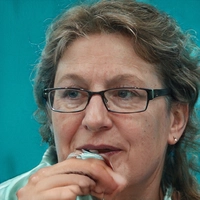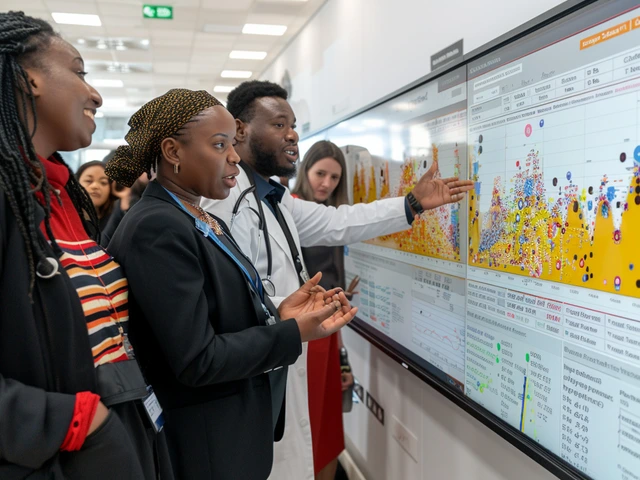Aug
7

- by Lillian Stanton
- 0 Comments
The Harmonious Dance of Binary
Programming, dear readers, is not merely the dry and logical endeavour that it might initially appear. No, with an appreciatively squinted eye and a twist of imagination, it gradually unveils itself as a harmonious dance of zeros and ones, a mesmerising performance where instructions, functions, and algorithms pivot and pirouette, weaving a complex tapestry that gives rise to the varied plethora of software we know and love!
You might have heard the adage, if a tree falls in a forest and there's no one there to hear it, does it make a sound? Douglas, my husband, once whimsically wondered, if a code runs on a computer, and there's no one there to see it, does it still produce a result? Of course, it does, darling, I replied, much in the same way that our Bolt still cavorts around the backyard even when we're not there to witness his canine capers. But I digress, so let's set aside the philosophical musings momentarily and plunge headfirst into the wondrous world of coding.
A Toes-dip into Languages
A journey often begins with the first step, and when it comes to programming, this means choosing the coding language to start with. Imagine yourself as a globe-trotting adventurer standing in front of a formidable wall adorned with an array of linguistic maps, from Python's clean, beginner-friendly topography, to the rugged mountain ranges of C++ and Java, through the modernist cityscapes of JavaScript and Swift. Each language is like a separate country with its own dialect, etiquette, and customs.
Don't fret if you can't decide where to start. Trust me when I say it's perfectly fine. I remember receiving a charmingly sassy look from Whiskers, our Persian cat when I was overwhelmed by the menu at our favourite sushi place for the very first time. Over time, I've grown to love the oceanic splendour of salmon nigiri and the elegance of cucumber maki. Similarly, with time, you'll learn to appreciate each language, find a favourite, and even become multilingual, so to speak.
Deciphering the Syntax
Just like spoken languages, every programming language also has its own syntax - its grammar, punctuation, and sentence structure. If we think of a program as a letter, then the syntax represents the rules that ensure the letter makes sense not only to us but also to the computer it's intended for. Have you ever tried having a conversation using the cryptic lyrics of an alternative rock song? Dougie and I tried this one night over a bottle of wine. We still laugh about how perplexing it was. And it wasn't just us, even Bolt and Whiskers were given pause!
If syntax is the skeleton upon which our program stands upright, then variables and data types are the organs that give function to the form. Variables are the heart of our code, storing, carrying, and pumping essential data through the arteries of our functions and methods. Whereas data types, much like organs - each with its distinct role, help shape and define the data flow.
Variables - The Workhorse of Programming
Getting familiar with variables and data types early is essential. In 'Lillian Language', if coding were baking, variables and data types would be the essential ingredients that render a delectable cake from a listless mixture of flour, sugar, and eggs.
Consider variables as empty cake tins, eager and ready to contain whatever ingredients we choose to bestow upon them. The type of variable we choose determines what ingredients it can hold — be it numbers, text, or even other variables. Just as we wouldn't pour cake batter into a saucepan, we must always ensure that we choose the right variable to carry our data. Isn't it fascinating how programming mirrors some aspect of every day living?
Data Types - The Many Avatars of Information
Complementing Variables' cheerful diligence, Data Types dictate the nature of the data we store or manipulate. They define the limits and offer unique ways to work with different types of data. Understanding data types is like knowing what ingredients you need for different recipes – buns for burgers, pasta for carbonara. Mix them up and you’ll get suspect culinary hybrids, like 'spaghetti-burger'. Which, now that I say it out loud, hasn’t stopped Douglas from making questionable midnight snack choices before!
Algorithms - The Rule Book
Algorithms, the list of instructions that tell our code what to do and when to do it, are like a rulebook for a board game. They specify the procedures for each task, enabling our code to navigate through vast amounts of data efficiently. Just as the right strategy can help you master a game of chess, the appropriate algorithm can have your program running smoothly and efficiently.
Data Structures - Defining Relationships
Data Structures formalize the relationships between our data. It is the layer that helps streamline our code, ensuring efficient processing and storage. Misplace one piece of data and you might find yourself in a digital labyrinth, as chaotic as our Bolt and Whiskers playing tag on a lazy afternoon! Understanding how to structure our data correctly helps in writing cleaner, more effective code.
Debugging - Turning Mistakes into Lessons
Lastly, debugging. Every programmer learns that coding is as much about overcoming challenges as it is about writing instructions. It's where we hone our problem-solving skills, just like the time I spent an entire afternoon hunting for Whiskers, only to find him napping peacefully in the linen closet! Debugging teaches us not only how to find and fix mistakes but also to learn from them.
So that wraps up our spirited adventure through the jargon jungle of programming. I hope that this tutorial has been both informative and entertaining, and that it leaves you with a newfound appreciation of the titanic complexity and sublime beauty that programming beholds. Remember, learning to code is like learning a new language – challenging but thoroughly rewarding. So, stay curious, and happy coding!






Write a comment